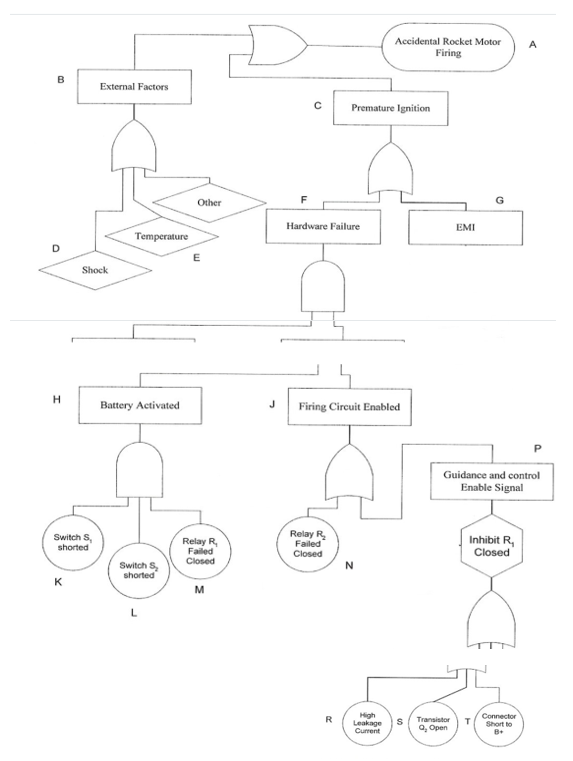Home /
Expert Answers /
Electrical Engineering /
determine-the-failure-rate-of-a-the-accidental-rocket-motor-firing-using-the-below-fault-tre-pa522
(Solved): Determine the failure rate of A, the Accidental Rocket Motor Firing, using the below fault tre ...
Determine the failure rate of A, the “Accidental Rocket Motor Firing,” using the below fault tree and data.
K = 50x10-3
L = 100 x10-3
M = 40 x10-3
N = 5 x10-3
R = 2 x10-3
S = 1 x10-3
T = 5 x10-4
G = 1 x10-4
D = 2 x10-3
E = 4 x10-3
Expert Answer
We must follow the fault tree to see which confluence of events would result in A occurring to calculate the failure rate of A.Starting at the top, we can see that A happens if either B and C happen at the same time or if D and E happen at the same time.Let's first calculate the probability of B and C occurring together:P(B and C) = P(B) x P(C|B) = K x L = Next, let's calculate the probability of D and E will occur together:P(D and E) = P(D) x P(E) = Using the formula P(B and C) = P(B) x P(C|B), we can determine the likelihood that events B and C will occur simultaneously by multiplying the likelihood that event B will occur (given by K) by the conditional likelihood that event C will occur given that event B has occurred (given by L). Using the formula P(D and E) = P(D) x P(E), we can determine the likelihood that events D and E will occur simultaneously by multiplying the likelihood that events D will occur (2x10-3) by the likelihood that events E will occur (4x10-3) respectively.
